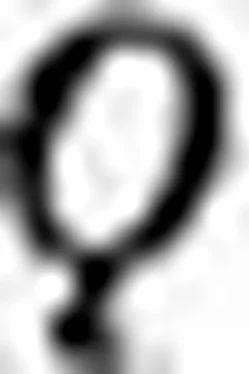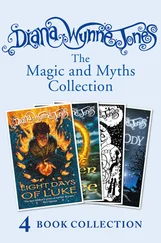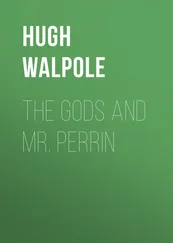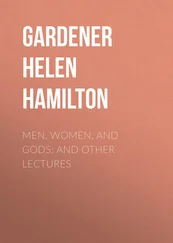Hilda Ellis Davidson - Gods and Myths of Northern Europe
Здесь есть возможность читать онлайн «Hilda Ellis Davidson - Gods and Myths of Northern Europe» весь текст электронной книги совершенно бесплатно (целиком полную версию без сокращений). В некоторых случаях можно слушать аудио, скачать через торрент в формате fb2 и присутствует краткое содержание. Жанр: История, на английском языке. Описание произведения, (предисловие) а так же отзывы посетителей доступны на портале библиотеки ЛибКат.
- Название:Gods and Myths of Northern Europe
- Автор:
- Жанр:
- Год:неизвестен
- ISBN:нет данных
- Рейтинг книги:5 / 5. Голосов: 1
-
Избранное:Добавить в избранное
- Отзывы:
-
Ваша оценка:
- 100
- 1
- 2
- 3
- 4
- 5
Gods and Myths of Northern Europe: краткое содержание, описание и аннотация
Предлагаем к чтению аннотацию, описание, краткое содержание или предисловие (зависит от того, что написал сам автор книги «Gods and Myths of Northern Europe»). Если вы не нашли необходимую информацию о книге — напишите в комментариях, мы постараемся отыскать её.
Gods and Myths of Northern Europe — читать онлайн бесплатно полную книгу (весь текст) целиком
Ниже представлен текст книги, разбитый по страницам. Система сохранения места последней прочитанной страницы, позволяет с удобством читать онлайн бесплатно книгу «Gods and Myths of Northern Europe», без необходимости каждый раз заново искать на чём Вы остановились. Поставьте закладку, и сможете в любой момент перейти на страницу, на которой закончили чтение.
Интервал:
Закладка:
The fact must be faced at the outset then that our written sources on the subject of northern heathenism are comparatively late, fragmentary, and of uncertain reliability. In Eliade’s book, Patterns in Comparative Religion , 1he asks us to imagine a Buddhist scholar setting out to explore Christianity. He does so
with only a few fragments of the Gospels, a Catholic breviary, various ornaments (Byzantine icons, Baroque statues of the saints, the vestments, perhaps, of an Orthodox priest), but able, on the other hand, to study the religious life of some European village.
This is a salutary exercise, because the evidence connected with the religion of the heathen north is something of this kind, except that we are at a severe disadvantage in that the life of the village now only exists in ancient records of varying reliability. In such a case as Eliade imagines, the Buddhist would no doubt be struck by the wide divergence between the customs of the village and the material in the Gospels and breviary. Should he conclude that the naïve superstitions and inarticulate responses of the villagers were nearer to the essentials of the Christian religion than, say, the opening chapters of St John’s Gospel, we know that he would be wrong. It is not that either is ‘truer’ Christianity than the other, but that the Christian faith exists at many different levels in different societies and in the minds of different men. We fall all too often into the same error when we approach one of the religions of the past. We must be prepared for the simple folk-beliefs of the less sophisticated to be found beside complex symbolism. The important thing is not to allow the crudity of the folk-beliefs to blind us to the depth and importance of the symbolism. Crude and childish ideas about the heathen gods will certainly be found in the myths, either because these satisfied ignorant folk, or because the use of symbols has been misunderstood by the recorder. But it does not follow that all who worshipped these gods were crude and childish in their religious outlook. Indeed the contention put forward in this book is that this was very far from the case.
New Light on the Myths
It should by now be evident that the study of the northern myths is neither simple nor straightforward. There are, however, more cheering factors to be taken into account. It would be fair to say that the student of early mythology today has a better chance of understanding it than at any previous period since interest in the northern gods was first aroused in the eighteenth century. We have new evidence to draw on, and new disciplines in which to work.
One of the most important of these is archaeology, in which development has been rapid during the last thirty years. We are unlikely to discover fresh written records from the heathen period, but the emergence of a new ship-burial or heathen temple is something which can happen at any time. Such discoveries can show us the way in which the people who worshipped the gods lived, the nature of their religious ceremonial, and how they treated their dead. Funeral rites in particular can tell us much about the use of religious symbolism, and what the worship of the gods meant to those who believed in them. A major archaeological discovery, like that of the Anglo-Saxon ship-burial at Sutton Hoo, may cause us to revise many of our former ideas about religious practice and symbolism. Sacred places like Jelling in Denmark and Old Uppsala in Sweden have been excavated not long ago; as recently as 1962 the site of the first little Christian church in Greenland, set up by the wife of Eric the Red, was discovered. Indeed archaeological evidence increases to an almost bewildering extent: from England alone the excavation of new Anglo-Saxon cemeteries of the pagan period and revaluation of records of earlier excavations are bringing to light fresh facts every year.
There is no doubt that all our resources are needed if we are to read archaeological evidence aright. We want knowledge of written records, the history of religions, and the use of symbolism, as well as the use of all available scientific methods for the preservation of finds. The effort is infinitely worth making, for a temple site or a royal grave, wisely excavated and recorded, can be like a voice speaking directly to us from the past.
Other sources of knowledge are less dramatic, demanding the slow amassing of data rather than sudden discovery. Such sources are the study of place-names, particularly of places named after the heathen gods; the study of religious symbolism, images of gods or monsters on memorial stones or signs representing the gods; and again the study of early inscriptions in Latin or in runes. All these kinds of evidence need to be used with much caution, for it is tempting to base wild assumptions on isolated details. But if assessed prudently, such evidence can throw light on the past, and students of religion too pedantic or cowardly to take it into account cannot hope to make real progress. Moreover there must be ready and generous cooperation between experts in different fields of knowledge if we are to make profitable use of the wealth of new information piling up concerning the pagan religion from which the myths emerged.
Above all, it is fair to say that we are now beginning to understand better the true meaning of the myth because of the great strides made in psychology and the study of the human mind. Every age, from that of Tacitus onwards, has shown interest in the legends of the past, and each has been influenced in its approach by its own particular interests and preconceptions. At the close of the nineteenth century it was believed that myths were essentially attempts to explain natural phenomena. Gods, giants, monsters, and demons who appeared in them were interpreted as standing for the sun and moon, wind, frost, or winter darkness, or for some other manifestation of the natural world. The god Freyr was a sun god, pure and simple. The monster Grendel in the poem Beowulf symbolized the dangerous climate of the fens, bringing plague to the king’s hall. The capture of Arthur’s queen Guinevere represented the triumph of winter. The weaknesses of this method as a universal key to mythology were well illustrated by Andrew Lang’s brilliant piece of satire, triumphantly proving Gladstone to be a solar myth. When this method of interpretation went out of fashion, there was great faith for a while in the study of folklore as a means of tracing the lost religions of the past. Popular beliefs still found among country folk concerning the old gods, like the idea in Sweden that the last sheaf of the harvest should be left for Odin’s horse, were held to throw new light on the nature of the beliefs of heathen times. The limitations of this approach have been clearly revealed by Jan de Vries, in two detailed studies of folk-beliefs about Odin and Loki. 1He has shown that popular folklore associated with an ancient god is just as liable to become one-sided, distorted, and over-simplified as are the themes of great poems retold in ballad form.
A new step towards the understanding of myth was made when C. G. Jung showed how the symbolism of ancient legends was echoed in the dreams of his patients, in cases where they were quite unfamiliar with the tales. It became clear that certain symbols, such as the dragon emerging from his den, or the climbing of a tree up to heaven, have a widespread significance for mankind. They recur in many parts of the world, in many periods. Our tale of Jack and the Beanstalk, for instance, is paralleled in Polynesia by the story of the hero Maui climbing to the sky; Jacob’s ladder is echoed by the rite of the priest-king of Ancient Ur ascending the Ziggurat, and by the magician-shaman in Siberia in our own times climbing a ladder cut in a beech tree. The symbols are found in folk-tales, in nursery rhymes, and in the imagery of poets, as well as in the legends of the gods. Such symbols may be borrowed in the first instance by one religious system from another, but the reason why they are retained and develop such vigorous life in the new context seems to be due to the deep appeal which they possess to the human mind. They express something of the desires, urges, and fears common to men of every age, to which, in Dr Johnson’s words, ‘every bosom returns an echo’. Thus it is that when we meet them in a legend or in poetic imagery, we experience immediate recognition of their rightness and power.
Читать дальшеИнтервал:
Закладка:
Похожие книги на «Gods and Myths of Northern Europe»
Представляем Вашему вниманию похожие книги на «Gods and Myths of Northern Europe» списком для выбора. Мы отобрали схожую по названию и смыслу литературу в надежде предоставить читателям больше вариантов отыскать новые, интересные, ещё непрочитанные произведения.
Обсуждение, отзывы о книге «Gods and Myths of Northern Europe» и просто собственные мнения читателей. Оставьте ваши комментарии, напишите, что Вы думаете о произведении, его смысле или главных героях. Укажите что конкретно понравилось, а что нет, и почему Вы так считаете.












